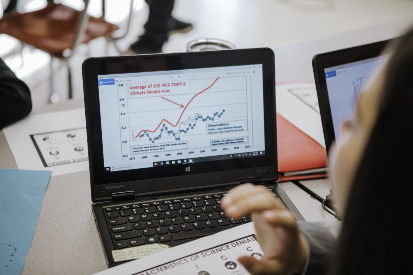Science Education and Outreach
We equip teachers with the knowledge and resources they need to accurately teach evolution, climate change, and the nature of science.
We equip teachers with the knowledge and resources they need to accurately teach evolution, climate change, and the nature of science.

Climate models are one of the most essential tools used by climate scientists. They are used to project long-term trends based on past data and present understanding of climate systems. This lesson set guides students through the analysis of real-world climate data to understand how scientists generate models and make future projections. Upon completion of this storyline, students will understand the predictive power of climate models and the numerous factors that are included in generating them.
This lesson set was revised on March 7, 2022.
Disciplinary Core Ideas
Performance Expectations
Other Relevant NGSS References:
This is a beta version of Lesson Set Two.

These free NCSE lesson sets are Selected-by-CLEAN. The Climate Literacy and Energy Awareness Network (CLEAN) uses a peer-review process to identify high-quality materials that align with the Climate and Energy Literacy Principles and the Next Generation Science Standards. Click the badge above to learn more.